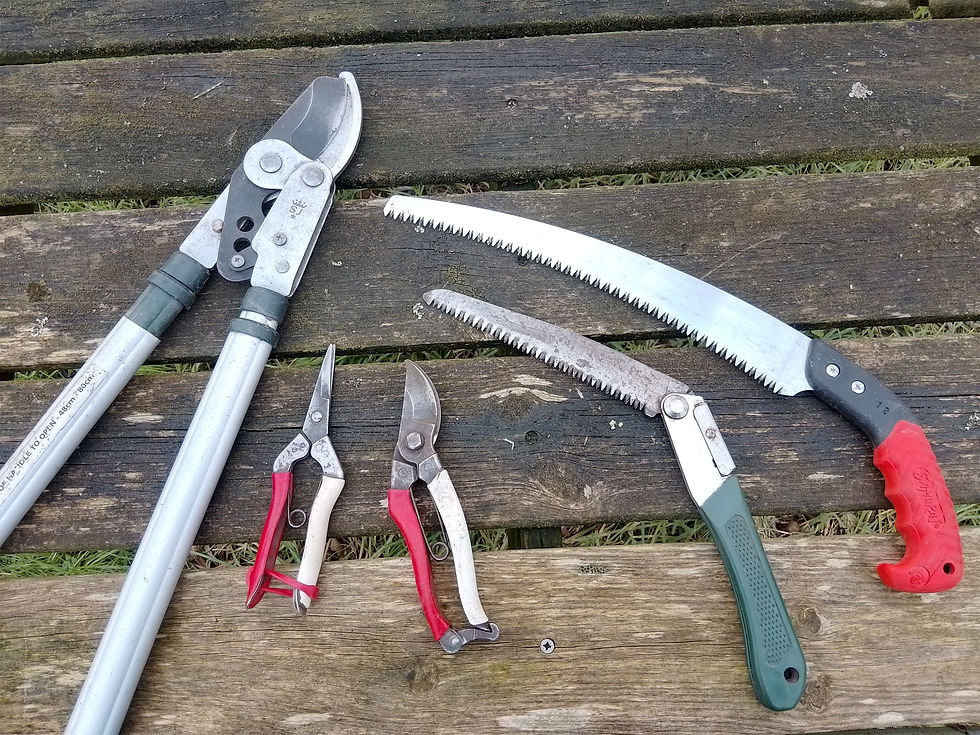Foundations of a Wildlife Garden
- Nancy Lowe

- Sep 21, 2021
- 4 min read
Updated: Nov 15, 2021
The secret to building a wildlife garden that truly thrives is to get a little bit technical about it. I bring a few simple ecological principles to mind in my plans for wildlife gardens and that way I know that I’ll be building strong foundations for a healthy, functioning garden ecosystem, that can integrate positively with the natural world beyond the garden gate. This blog post is the first in a Wildlife Gardening series, exploring the principles and features of great wildlife gardens. In this post, I’ll be looking at those all-important foundational principles that set the stage for a wildlife garden that is full of health and vitality and, of course, full of life.

FOOD CHAINS
The first of the ecological principles you need to have in mind is the food chain. The classic model for this is illustrated below and is made up of plants at the base, which are eaten by herbivores, which, in turn, are eaten by carnivores. The idea is, that if we focus on nurturing the base of the food chain, we’ll see knock on benefits for all the other animals further along the line.

Of course, in real life, it’s more complicated than this simple diagram and thankfully doesn’t involve us growing cabbages to keep local wildlife happy!
Plants and animals fit together into more of a web shape when we map out who everyone is eating. What we tend to find is still that there’s a rough layering, with plants and insects at the bottom, smaller birds and animals above them and larger birds and animals right at the top. The smaller birds and animals often tend to eat both plants and insects and the larger birds and animals sometimes eat plants, insects and small birds and animals.

At the base of our garden ecosystem, therefore, we have our garden plants and we have insects. As I've already described - if we nurture this base to our system, we will see knock on benefits cascading up to everything else. So a key thing to remember is that when you are choosing plants and other features for your wildlife garden, focus first of all on those that are good for insects.
FOUNDATIONAL NEEDS
The second of our principles to keep in mind is that all living beings have three foundational needs: food, water and shelter.
We all love the company of our friends and family, many of us enjoy getting out to see live music or settling in with a good film, but at the end of the day, we can survive without these things. What we can’t survive without is food, water and shelter and it’s the same for everyone else. Plants, animals, birds and even bacteria and other soil microorganisms all have these same three foundational needs.

So when we’re providing for our insects, we’re going to be making sure we’ve got all these needs covered and there are countless ways we can do this, which I'll be exploring more in a future article.
One example I'll share with you right now though is my sedum plants, which right now in later summer, as you can see below, are providing lots of nectar for the bees to feed on. Through winter, I leave up the stems to provide shelter for over wintering insects and then I cut them back in spring, ready for a fresh flush of leaves and actually these are also useful for wildlife in that they are particularly good at gathering big pockets of water, which the birds can use to drink from.
If you want to add some great wildlife features to your garden right now, summer flowering plants with attractive winter stems are a really great addition to any garden. Other examples to look out for include michaelmas daisy, echinacea, sea holly, monarda/bergamot and phlomis. Get enough to create a big patch of each type of plant you choose - at least three plants as a minimum - to be sure you're laying on a great big spread to attract the bees or other insects passing your way.
However, I'm sure if you went outside right now and had a walk around your garden, there would already be a number of different ways you're providing food, water and shelter for insects or other wildlife. There are certainly an almost bewildering array of possible wildlife features we can choose for our gardens.
In a follow up article, I’ll be presenting these features in - hopefully - an easy browse format that will make it clear how to methodically cover all of these foundational needs for the wildlife in your garden, while keeping to a style that suits your personal aesthetic.
In the next article in this series, I'll be looking at another really important facet of a thriving wildlife garden - health. The wildlife that visits our gardens will only flourish if our gardens are really healthy and again, there are just a few easy to follow principles that you can use to make sure your garden is always working its way towards maximum health. If you can get this bit right and remember that key principle - to nurture the base of the food chain with food, water and shelter - then everything else will fall into place.







Comments